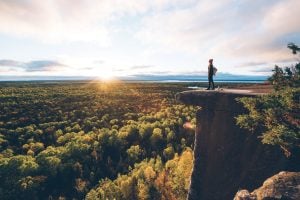
Travel
The spell of the Yukon
An insider’s account of the modern-day gold rush
- 4210 words
- 17 minutes
This article is over 5 years old and may contain outdated information.
People & Culture

“NTS 059H12,” as it’s officially coded, is an important map, and not because it’s centred on 1,700-metre Pyramid Peak and the surrounding High Arctic landscape of Nunavut’s Axel Heiberg Island. It’s one of tens of thousands of such topographic maps by Natural Resources Canada’s mapping information branch. What made it stand out when it was created in March 2012? It was the final piece in a 65-year, 1:50,000- scale puzzle.
In 1947, the Canadian government launched a monumental mission to create detailed topo maps, at that scale, of every corner of the nation (all 9,984,670 square kilometres of it). Led by program director Douglas O’Brien, the current mapping team of more than 50 at Natural Resources Canada — the government ministry responsible for natural resources and Earth sciences, mapping and remote sensing — completed the task after a final three-year push to make the remaining 1,600 map sections.
A lot changed in 65 years. In the 1970s and ’80s almost 400 people were mapping Canada’s topography for the organization. By the early 1990s, the focus had turned to data collection and storage and the conversion of traditional paper maps into digital files. The team’s work is never truly done, of course; they’re continuously updating data and improving access to the maps on geogratis.gc.ca.
“This is a milestone for Canada,” O’Brien says. “We now have a complete topographic picture of Canada’s geography from coast to coast to coast.”
Are you passionate about Canadian geography?
You can support Canadian Geographic in 3 ways:

Travel
An insider’s account of the modern-day gold rush

People & Culture
The story of how a critically endangered Indigenous language can be saved

Travel
The new movement building flourishing tourism hubs across Canada – one sustainable example at a time

Science & Tech
As geotracking technology on our smartphones becomes ever more sophisticated, we’re just beginning to grasps its capabilities (and possible pitfalls)